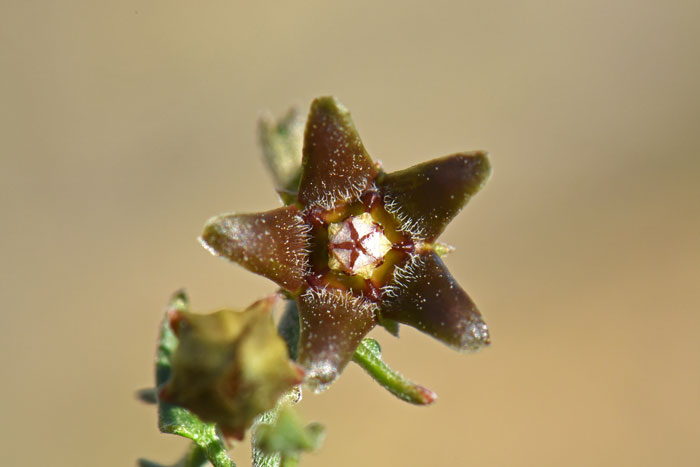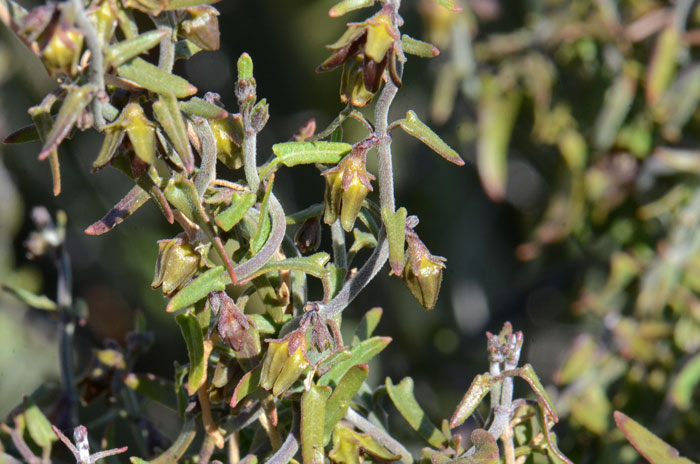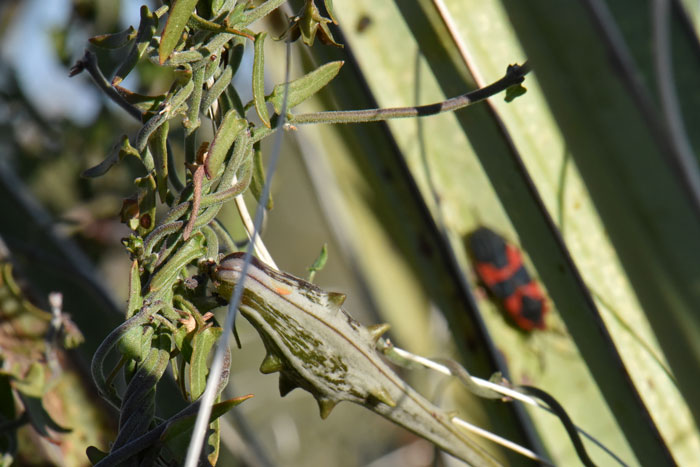Matelea parvifolia, Spearleaf




Scientific Name: Matelea parvifolia
Common Name: Spearleaf,
Also Called: Littleleaf Matelea, Small-leaf Anglepod
Family: Asclepiadaceae, Milkweed Family
Synonyms: (Gonolobus californicus, Gonolobus parvifolius)
Status: Native
Duration: Perennial
Size: Up to 1½ feet or more via twining vines with slender stems.
Growth Form: Shrub, vine; plants with a milky sap, pubescent; twining vines from a woody base.
Leaves: Green; deltoid-oblong; shallowly hastate or sub-hastate as base.
Flower Color: Greenish to purple; flowers solitary or in pairs, nearly sessile, corolla 3 to 4mm long; less than 2cm long, not more than1 cm wide; fruit a follicle with longitudinal grooves.
Flowering Season: March to October; March to May in California.
Elevation: 1,500 to 4,500 feet; 2,000 to 3,000 feet in California.
Habitat Preferences: Dry rocky slopes, desert scrub, mountains, mesas and canyons.
Recorded Range: Matelea parvifolia is relatively rare in the United States where it is found in widely scattered populations in AZ, CA, TX. It is also native to Baja California and northern Mexico. In Arizona it is found in the western part of the state in La Paz, Mohave and Yuma counties; in the central and southern parts of the state in Gila, Maricopa, Pinal, Yavapai and Pima counties.
North America & US County Distribution Map for Matelea parvifolia.
U.S. Weed Information: No information available.
Invasive/Noxious Weed Information: No information available.
Wetland Indicator: No information available.
Threatened/Endangered Information: No information available.
In the Southwestern United States: Arizona has 5 species of Matelea, California has 1 species, Nevada and Utah each have 0 species, New Mexico has 2 species, Texas has 15 species. All data is approximate and subject to taxonomic changes.
Comments: Spearleaf, Matelea parvifolia, is similar in appearance to Texas Milkvine, Matelea producta, however the leaves and flowers are larger on Texas Milkvine.

